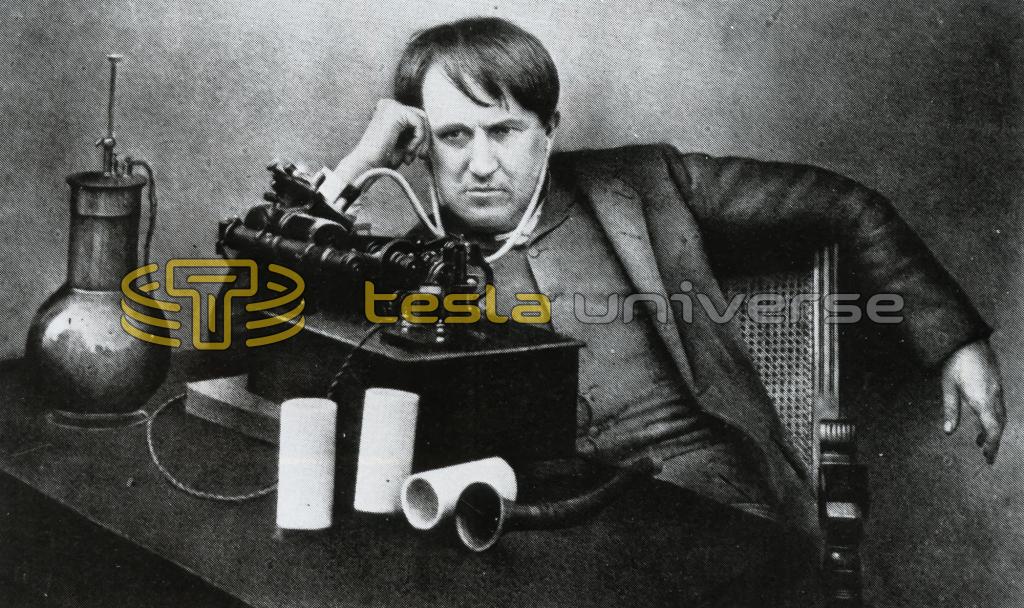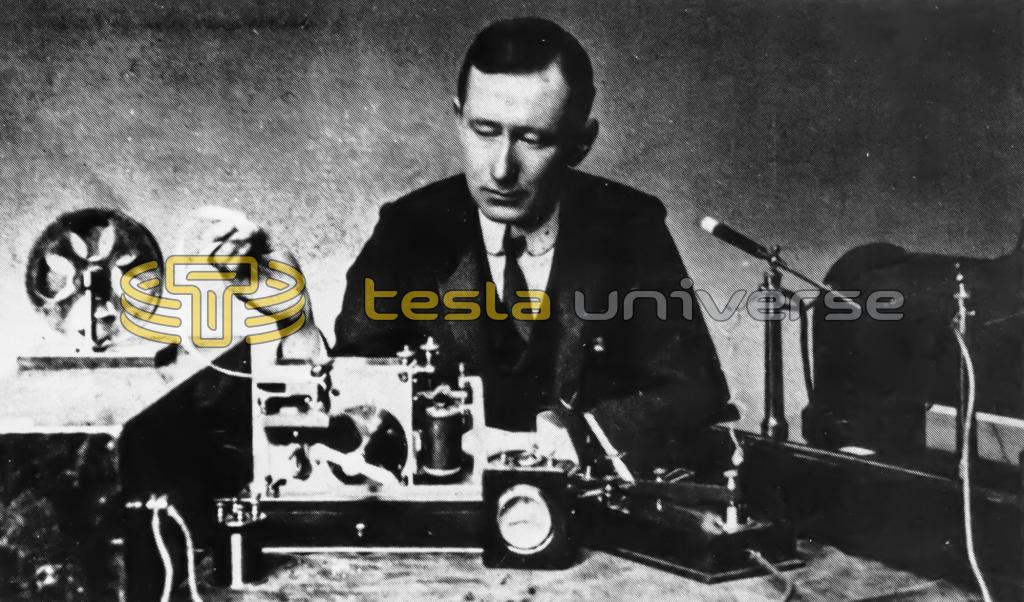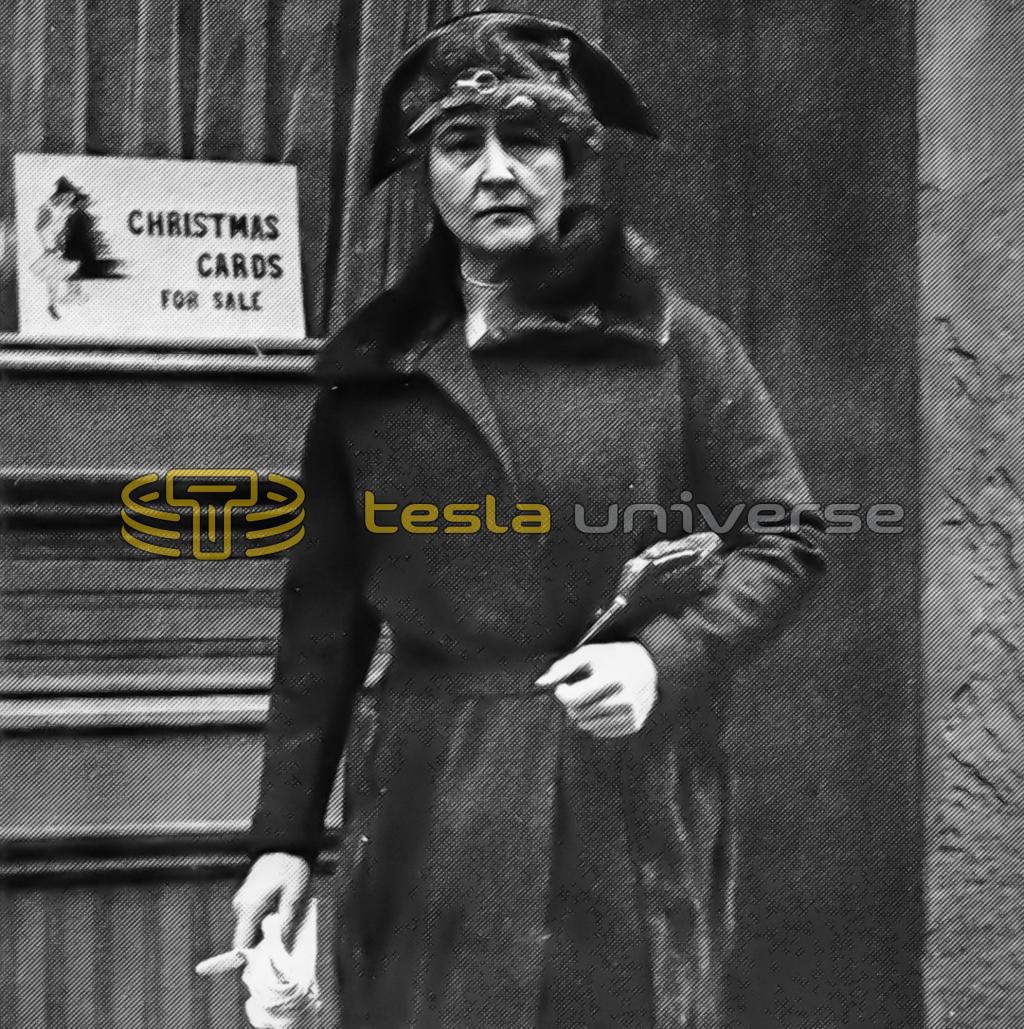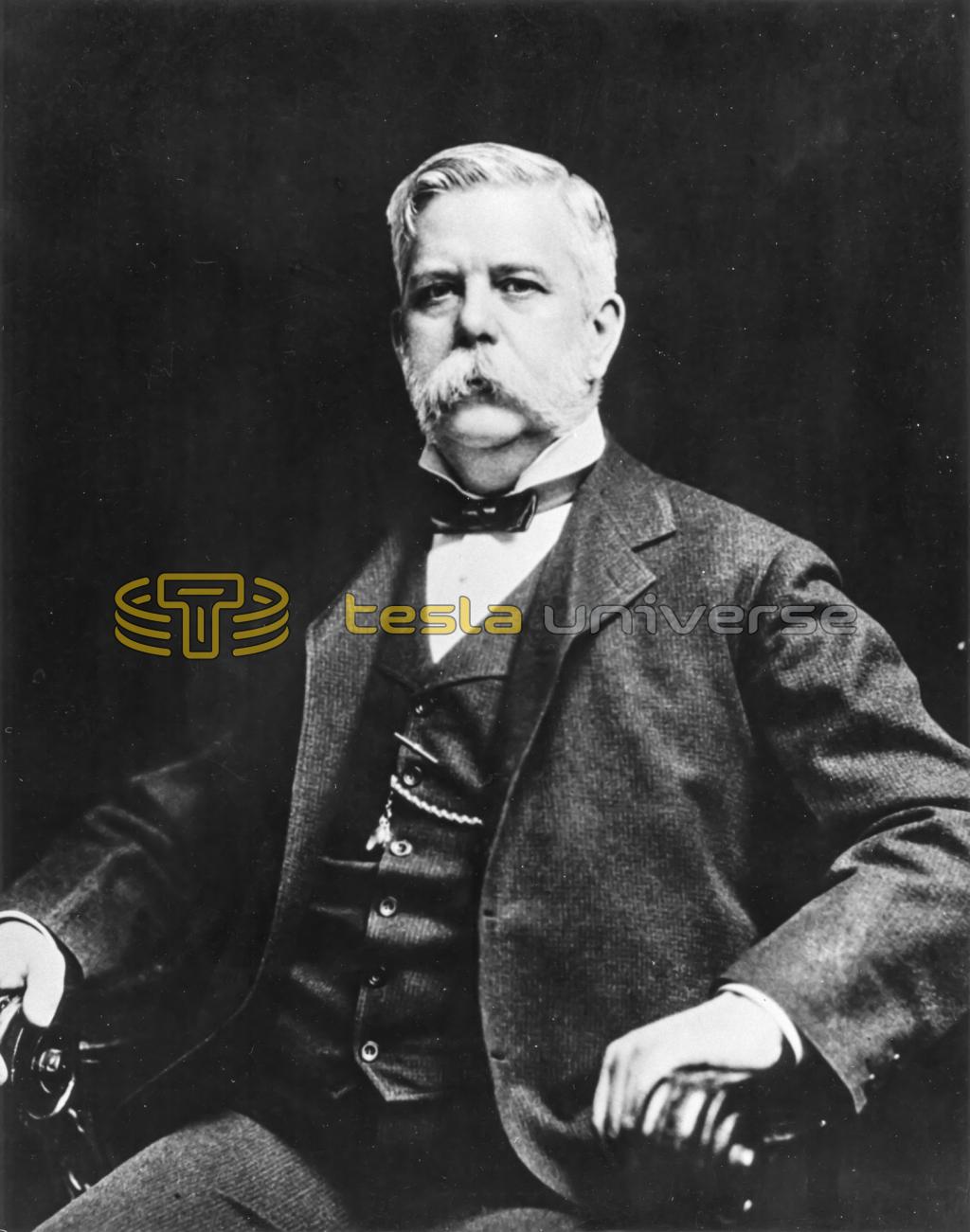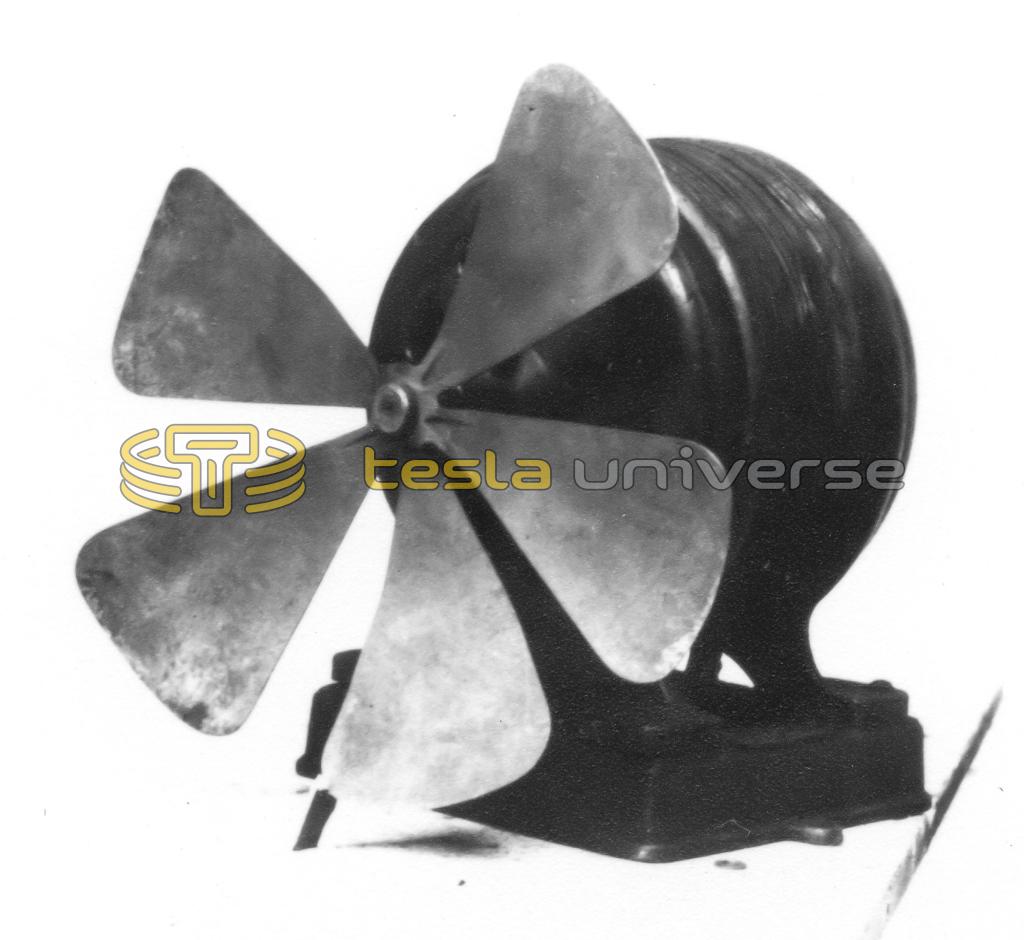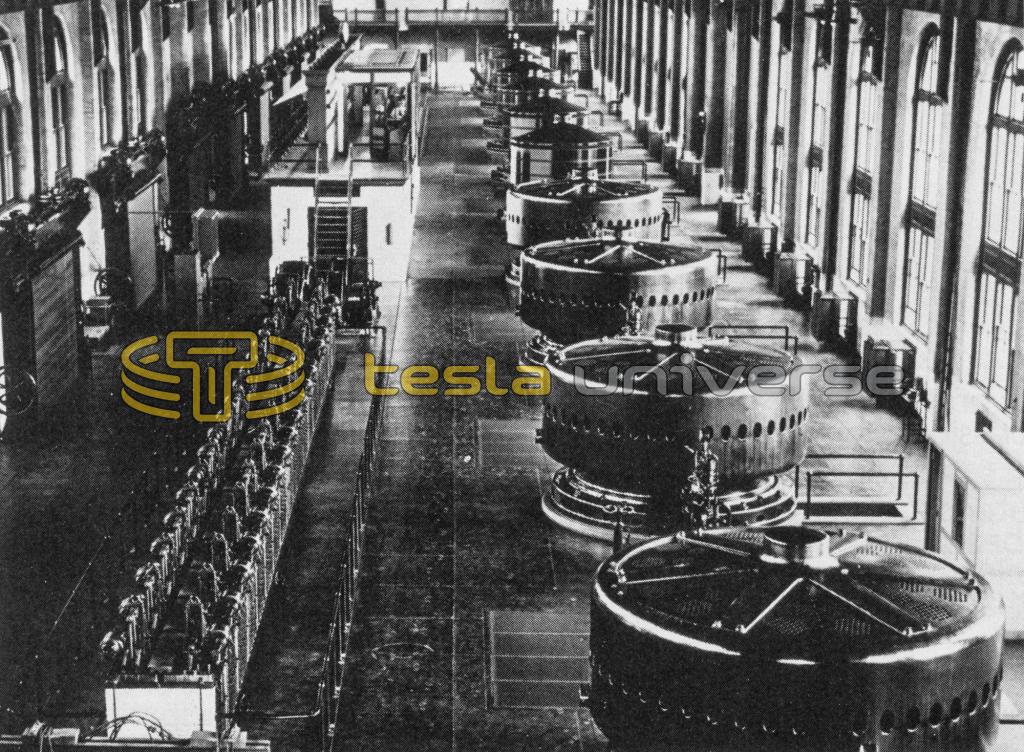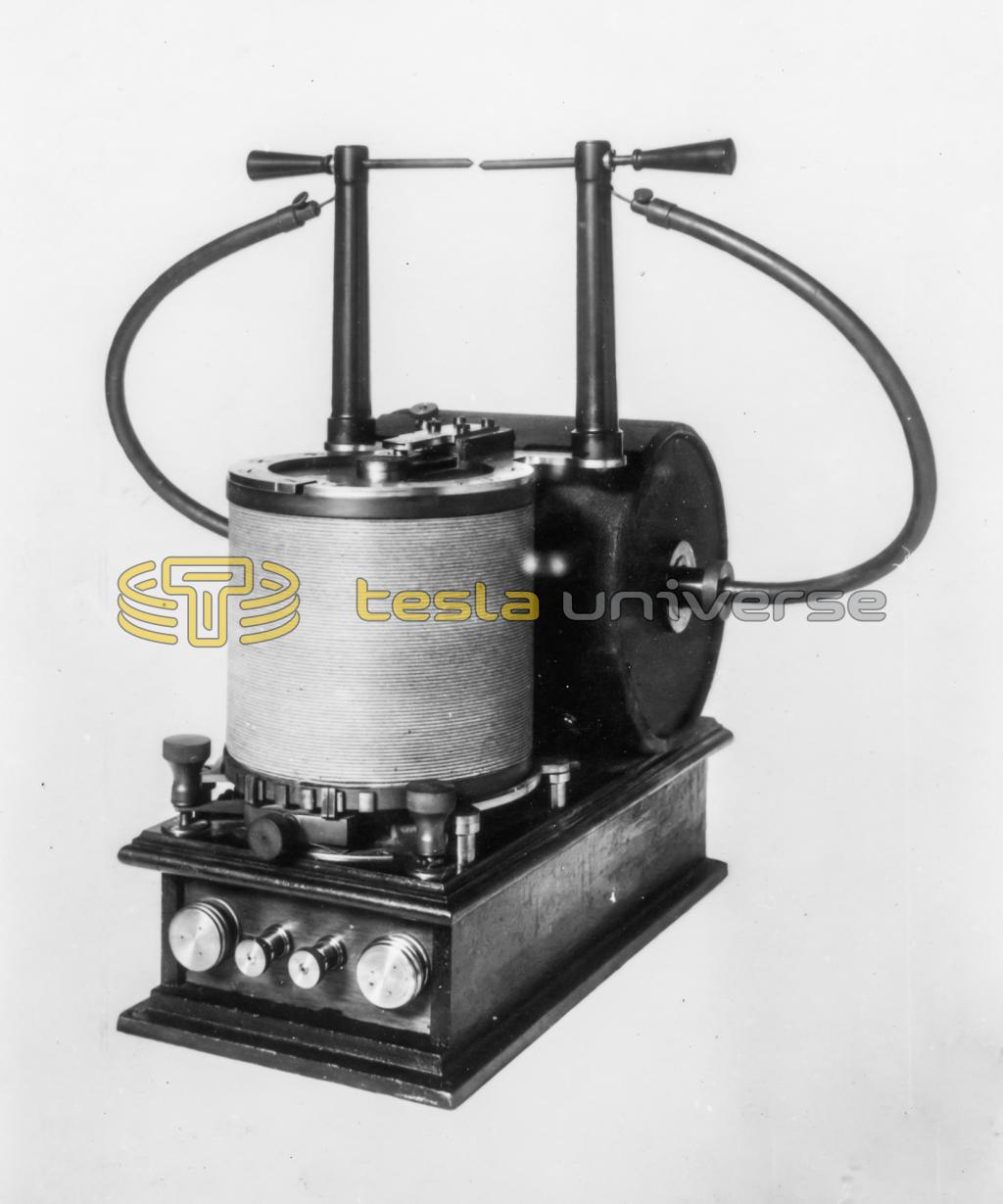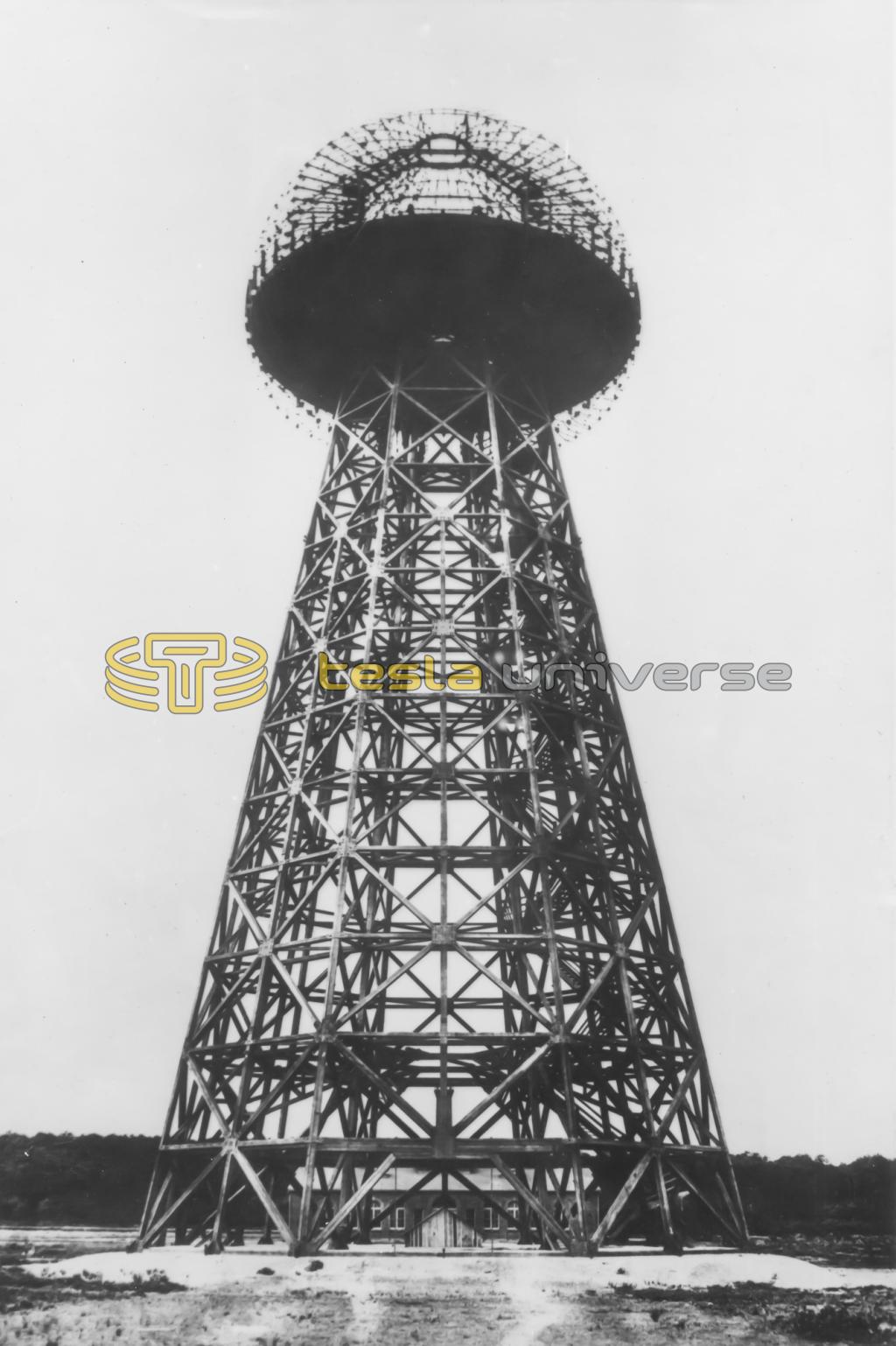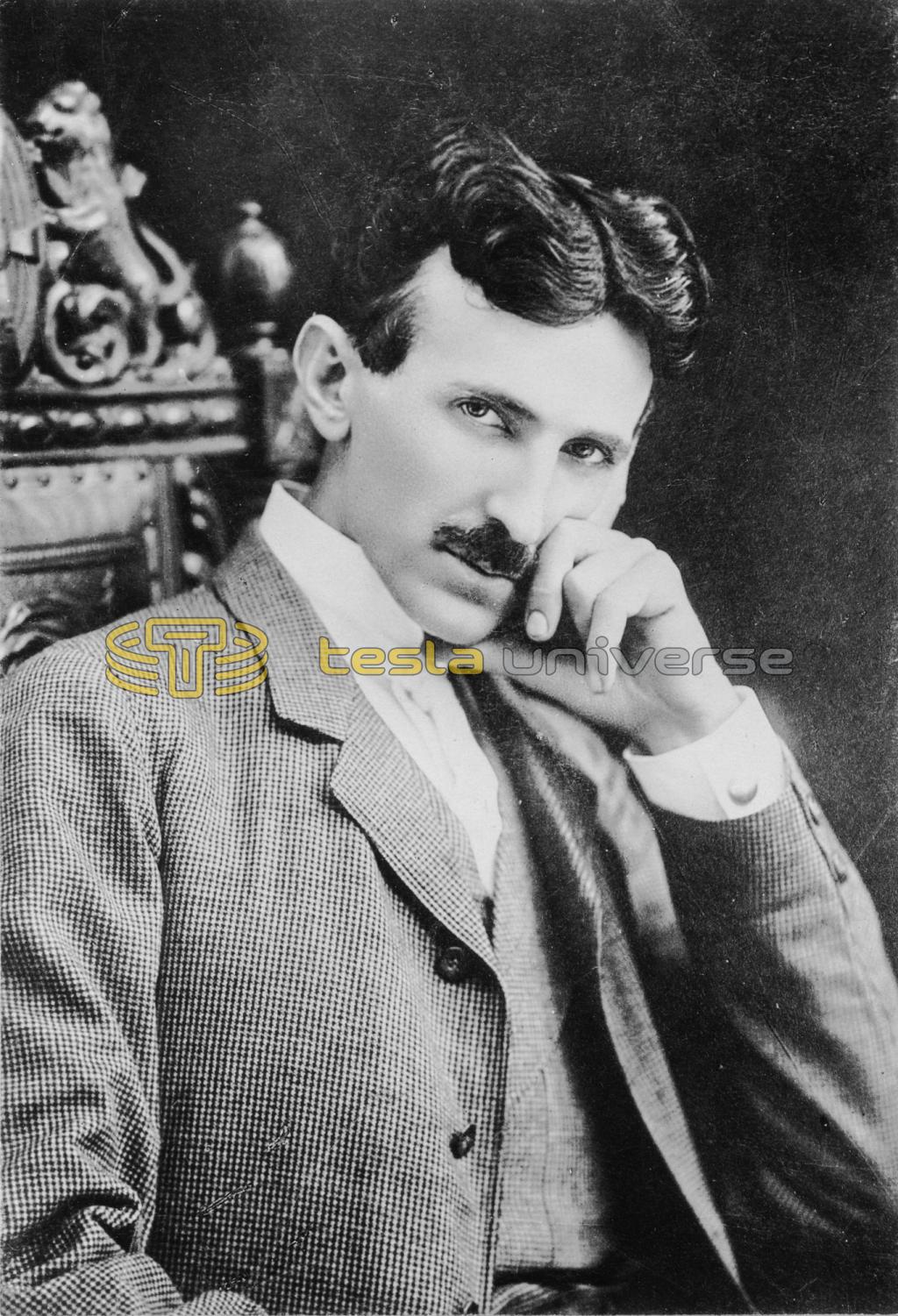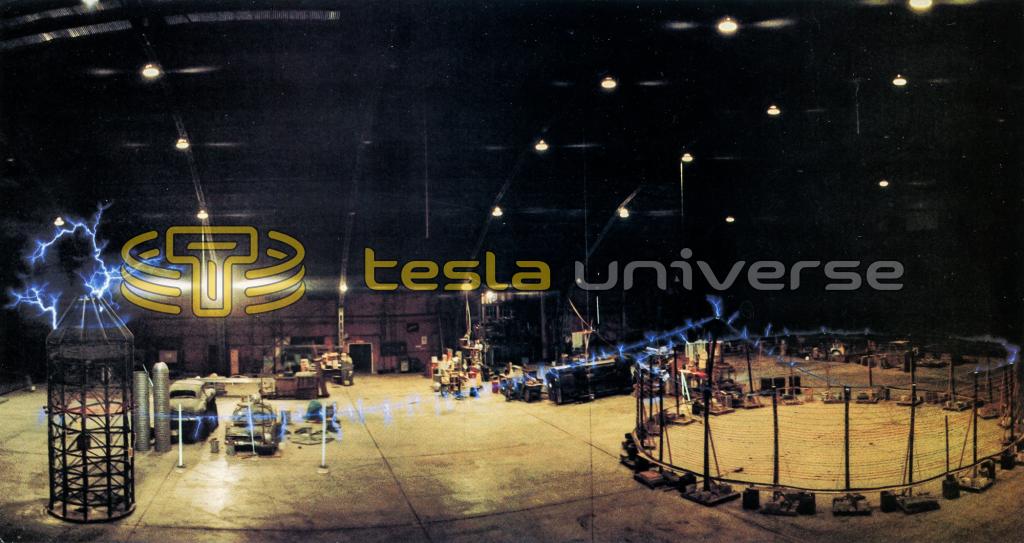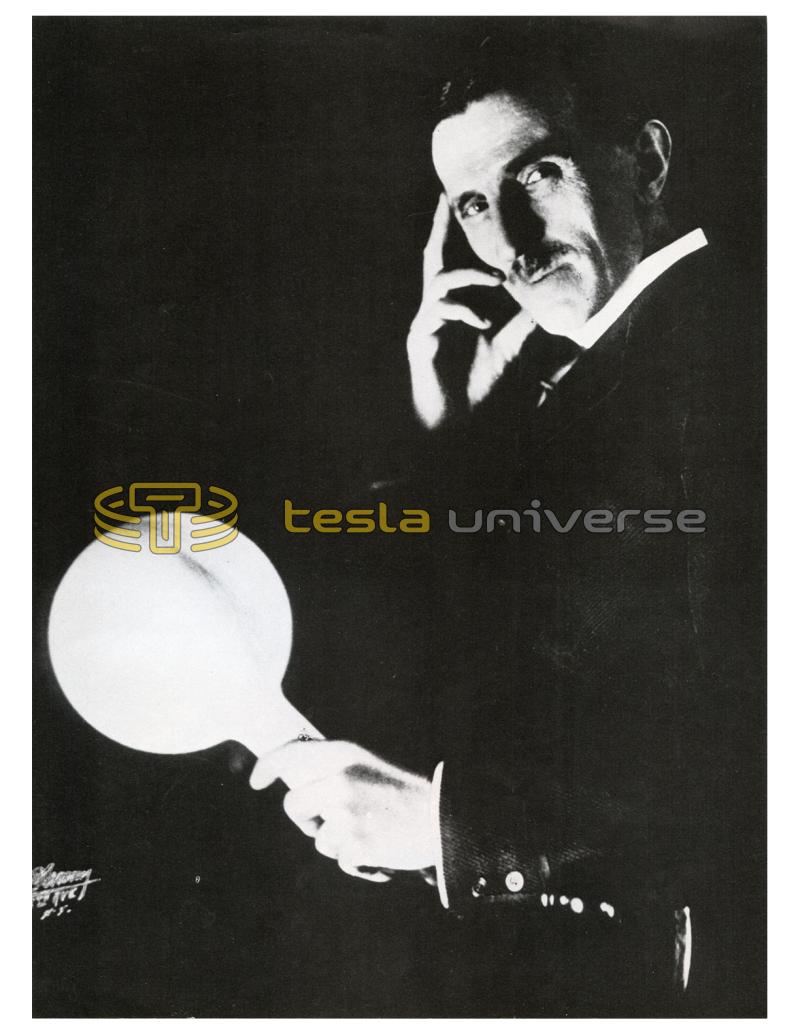
Nikola Tesla Articles
Tesla: a scientific saint, wizard or carnival sideman?
History has not been kind to the showy inventor of alternating-current motors and more, but the tide is at last turning
The laboratory, infamous among neighbors, was located on the fourth floor of a building on south Fifth Avenue, just above Bleecker Street. Strange glows and flashes of blue lightning emanated from it in the middle of the night. In Victorian New York, these were silent, eerie announcements that the age of electricity would soon similarly glow and flash all across America.
Nikola Tesla would usually show up after dinner, around 10 o'clock, and work through until morning. When journalists or friends like Mark Twain dropped by, Tesla would amuse them with electrical tricks. For his pièce de résistance, the tall, immaculately dressed host would leap onto an electrified platform. Ever the picture of erect charm and courtesy, he remained motionless as the voltage steadily rose; soon, two million volts of electricity were coursing over his body. The electricity created an interesting effect: a kind of electrical halo surrounded Tesla as he stood there, unmoving, an object of astonishment and envy, alone in his private universe of electrons and light.
Whether Tesla is the patron saint of modern electricity or some carnival sideman in the history of science is an issue that prompts a good deal of heated disagreement even now, 130 years after his birth. In Yugoslavia he is a national hero. To boosters in the International Tesla Society he is the unacknowledged inspiration for everything from radio to robots to radar. A devoted group of disciples in California is convinced that at his death he was whisked back to Venus, from whence he first came. Among contemporary academics and historians of science one hears more modest assessments of his talents, as well as occasional muttered use of the word “crackpot.” Variously described as a “gifted madman” and as “a medieval practitioner of black arts,” Tesla remains in death as in life a lightning rod for all manner of praise, criticism, controversy and exaggeration.
His brain, wrote one admirer, was to the intelligence of other inventors “as the dome of Saint Peter's to pepper-pots.” Hardly anyone disputes that Tesla possessed a brilliant intellect, and a good thing, too, for his personal idiosyncrasies would have thoroughly undermined the credibility of a lesser talent. The same man who compulsively computed the cubic contents of every meal set before him made alternating current practical for mass use. The neurotic who reacted with phobic horror to pearl earrings on women was one of the pioneers of wireless transmission — what we call radio. The visionary who foresaw plasma physics and the cyclotron had a deathly fear of germs. The eccentric who insisted on having exactly 18 napkins with which he polished the silver and glassware before every dinner, and who tried to stay in hotel rooms whose numbers were divisible by three, received patents for robots and remote-control devices before the turn of the century. Millions scoffed when, almost five decades ago, he spoke of death rays and an electronic “Chinese wall” of defense around America created out of radio waves; now, billions of dollars are being spent on the conceptually similar “Star Wars” defense.
A dizzying array at devices
Tesla admirers attribute to him the origins and application of a dizzying array of devices; fluorescent lights, x rays, the electron microscope, microwave transmission, satellite communications, solar energy, guided missiles, computers, the automobile speedometer, television, vertical-takeoff aircraft and radar. A symposium to be held this summer in Colorado Springs, jointly sponsored by the International Tesla Society and the local section of the Institute of Electrical and Electronics Engineers, attests to the interest Tesla still generates among scholars.
William Terbo, honorary chairman of the Tesla Memorial Society and the inventor's grandnephew, is gratified, of course, but sighs at the lack of credit. “When you're a little ahead of your time, you can be proven right in your lifetime. When you're way ahead of your time, the cause and effect may not be so evident.”
Tall, stylish, with smoldering blue eyes and a fine mustache, aloof yet full of charm, Tesla was a master of electricity when electricity transformed American life, a peer and rival of Thomas Alva Edison. Indeed, rarely has the combination of personal grandiosity and technical genius produced such spectacular results. At the height of his powers, Tesla created an earthquake that made a Manhattan building rumble, lightning that rolled across the plains of Colorado and, in a regrettable excursion into man-made pomposity, threats of planetary omnipotence. With his oscillating vibrator, he boasted, he could split the Earth “as a boy would split an apple — and forever end the career of Man.”
He arrived in New York City in 1884 with four cents and a few of his own poems in his pocket. Within 20 years his adopted homeland would begin to be wired with a system using alternating current, which evolved from an idea he had brought from Europe to America.
Tesla was born at midnight between July 9 and 10, 1856, in the Croatian village of Smiljan. His father was a clergyman, his mother a strong inventive woman with a prodigious memory. Accounts of his childhood (of which Tesla himself was the primary source) are more inspirationally than factually satisfying. As a youngster, he invented his own waterwheels and motors driven by June bugs; he also took apart watches. By the time he was a teenager, he spoke four languages. As an 11-year-old, one story goes, he would stay up all night reading by candlelight; this being the boy-inventor nonpareil, he of course made the candles himself.
One of Tesla's particular gifts was mathematics. His genius in the subject reportedly stemmed from a more controversial “talent”: the ability to experience visions. Tesla's biographers report that he was able to visualize a blackboard and compute upon it, thus performing complicated mathematical calculations almost as soon as they were recited.
As brilliant as the young Tesla was, so too was he chronically infirm and bedridden. An ill-conceived childhood invention (refined some years later by the Wright brothers) had Tesla hyperventilating on a barn roof to lighten himself, and then leaping into the air with an umbrella; the convalescence was long and painful. In his teenage years, he contracted malaria, cholera and unspecified nervous disorders that brought him to the verge of death and may have contributed to his germ phobia.
Soon he was off to Graz, Austria, to study electrical engineering; he later attended the University of Prague. In 1881 he found himself employed by the new Central Telegraph Office in Budapest. Working 19 hours a day, sleeping only two (a pattern he allegedly maintained for the rest of his life), Tesla suffered what we would now call a nervous breakdown.
While recovering, he had a vision that led to the most widely applied of all his ideas: the rotating magnetic field and the alternating-current induction motor. It had all the elements of high drama.
Tesla was strolling through a city park with a friend at the time. The sun was setting. Lines from Goethe's Faust, committed to memory years earlier, came to mind and Tesla recited: “Ah, that no wing can lift me from the soil / Upon its track to follow, follow soaring!” Suddenly the idea hit him “like a flash of lightning and in an instant the truth was revealed.” While his friend worried that the sickly Tesla had been seized by a fit, Tesla grabbed a stick and quickly diagrammed the wiring of an electrical motor in the dust. This drawing represented the rotating magnetic fields of an alternating-current motor.
Tesla realized that by surrounding the armature and drive shaft of a motor with several wire-taped blocks, or field windings, one could electrically feed each winding with alternating current slightly out of phase with the others. By precisely timing these “polyphase” currents, in fact, a north-south magnetic field could be made to circle around the drive shaft and induce it to follow magnetically. Goethe's “follow, follow,” it has been suggested, put him in mind of a rotating magnetic field and the armature following it.
What he had hit upon was a successful solution to problems (such as sparking) inherent in early direct-current motors. His concept — the possibility of using alternating current — without exaggeration revolutionized the use of electricity.
Alternating current was his entrée to the front ranks of electrical engineering. The Continental Edison Company, based in Paris, hired the 26-year-old Tesla as a troubleshooter. Although no one expressed much interest in his AC motor design, one of his bosses, Charles Batchelor, who had worked with Thomas A. Edison, sent Tesla off to New York with one of the pithiest and most prophetic letters of introduction ever penned. Wrote Batchelor to Edison: “I know two great men and you are one of them; the other is this young man.” America's reigning inventive genius hired him on the spot.
They were two extremely bright, willful and egocentric men, destined to clash. Tesla lasted less than a year in Edison's Manhattan workshop, but the rivalry went on for a lifetime. The two inventors parted company in 1885 on less than felicitous terms. Tesla claimed Edison had reneged on a promise to pay him $50,000 after he had designed a complete line of new dynamos and that Edison lamely explained away the dispute by saying, “You are still a Parisian. When you become a full-fledged American, you will appreciate an American joke.”
The hostilities assumed gigantic proportions when Tesla's AC system came to the attention of George Westinghouse, the inventor whose growing industrial empire was based in Pittsburgh. Westinghouse immediately saw the practical advantages offered by Tesla's AC motors and an alliance was forged with the newly formed Tesla Electric Company in 1888. What was at stake was nothing less than the power system which would drive America's booming industrial sector, feed its subways, power its streetlights, and light homes in every state in the Union.
This was the ultimate power struggle, the War of the Currents: Edison's DC versus Tesla's AC. Direct current could be delivered economically only within a few miles' radius of its source. A national power grid of Edisonian stamp would have littered the land with nearly as many power stations as fire hydrants.
Tesla's polyphase system, by contrast, allowed power to be transmitted hundreds of miles because alternating current could be economically transmitted at high voltages, then reduced, via transformers, to lower voltages for household use. The economic stakes were enormous. For the rights to use his patents, Westinghouse was willing to pay Tesla $70,000 in cash and notes, plus a fabulous royalty of $2.50 per each horsepower produced.
The propaganda that flew back and forth had the voltage of a religious schism. According to historian Thomas Hughes, Edison's campaign to discredit AC reflected “one private enterprise's endeavor, through political power and legislation, to outlaw the technological advantage of another.” Edison and his allies had huge capital investments tied up in direct current, so they argued that alternating current was dangerous and potentially fatal to consumers. Edison forces even conspired to place a Westinghouse AC generator in New York's Auburn State Prison to power its electric chair: after the first prisoner was electrocuted in 1890, they gleefully campaigned against “the executioner's current.”
But Westinghouse proved a formidable ally for Tesla. His engineers modified the Tesla system for practical use, and bit by bit it gained adherents. Edison's outrageous slanders notwithstanding, AC was perfectly safe, if properly handled, and finally made long-distance transmission of power economically feasible. In 1892, Westinghouse underbid Edison and won the right to provide the power system to light the 1893 WorId's Columbian Exposition in Chicago. Adoption of alternating current for the 1896 Niagara Falls hydroelectric project (p. 128), first of its kind in the country, signaled America's inevitable conversion to the Tesla system.
Yet Tesla's victory bad a bittersweet economic outcome. Early on, when the issue was still in doubt and the Westinghouse Company found itself in severe financial difficulty, George Westinghouse faced intense pressure from bankers to revoke the lucrative royalty agreement with Tesla. Tesla, never especially shrewd in financial matters, agreed to accept a $216,000 cash settlement. It was a tragic miscalculation, for at the stroke of a pen he surrendered a fortune — estimated as high as $12 million in only four years. After one decade of glory, his scientific work would forever suffer for lack of cash.
Poverty was hardly a concern to Tesla in the 1890s. He had become such a celebrity that at the 1893 Fair he starred in his own exhibition. He cut a dashing figure as he strode onstage in white tie and tails. Before a gasping crowd, he calmly stood in his cork-bottomed shoes as several hundred thousand volts of electricity from it nearby Tesla coil coursed over his body. He would pick up light bulbs or long glass tubes. Unconnected to any wire or any source of power, the bulbs bloomed with light in his hand, the glass tubes flared into luminous swords. Sometimes he even struck a Statue of Liberty pose to heighten the effect.
He lived at the Waldorf-Astoria and had a regular table at Delmonico's. Even his love life — or, more accurately, his resolute bachelorhood — became the subject of comment. The Electrical Review observed in 1896, “We are certain that science in general, and Mr. Tesla in particular, will be all the richer when he gets married.” Tesla, the celibate loner, revealed his own views around 1897 when asked if he believed in marriage for people of “artistic temperament.”
“For an artist, yes; for a musician, yes; for a writer, yes; but for an inventor, no,” he replied. “The first three must gain inspiration from a woman's influence and be led by their love to finer achievement, but ... I do not think you can name many great inventions that have been made by married men. It's a pity, too, for sometimes we feel so lonely.”
His strange phobias were never cited, of course. Anne Morgan, the handsome daughter of financier J. Pierpont Morgan, reportedly fell in love with Tesla; she made the unforgivable mistake, however, of wearing pearl earrings at their first meeting.
If your definition of radio is the wireless communication of signals from a transmitter to a receiver, then Tesla demonstrated something very much like this in 1893. Not only did he propose the technical means of transmitting signals with special high-frequency transformers he'd invented in 1890 known as “Tesla coils”; he later had the vision to predict their ultimate application. “A cheap and simple receiving device,” he wrote in 1904, “which might be carried in one's pocket may then be set up anywhere on sea or land, and it will record the world's news or such special messages as may be intended for it.”
Tesla's concept of “wireless intelligence” was, as usual, part of a larger technical cosmology. He believed either radio signals or pure electrical power could be transmitted by electromagnetic vibrations throughout Earth. He devoted two years to a variety of experiments until his work was tragically interrupted in March 1895. The building housing his laboratory burned to the ground. Tesla lost everything — machinery, equipment, papers, mementos.
It took months to find a new lab, on East Houston Street, and another two years to get it outfitted. This delay may be considered something like a gestation period for one of science's great controversies. Later in 1895 Guglielmo Marconi (SMITHSONIAN, March 1982) first demonstrated the wireless transmission of signals in Italy. In June 1897 Tesla had accomplished much the same thing: he had broadcast signals from his Houston Street laboratory to a boat 20 miles up the Hudson River. Patents were filed by Tesla the following September.
It is Marconi and not Tesla, of course, who is generally accorded the honor of having invented the radio, although Tesla sarcastically remarked on the very day in 1901 that Marconi sent his famous “S” signal across the Atlantic, “Let him continue. He is using 17 of my patents.” Tesla devotees argue that, beginning with the invention of the Tesla coil in 1890 and culminating with the 1893 lectures, Tesla had briefly outlined basic principles of wireless transmission. They are not alone. Haraden Pratt, a respected historian of electrical science, has observed that Tesla, though mistaken for a dreamer by his contemporaries, “stands out as not only a great inventor but, particularly in the field of radio, as the great teacher.”
Even today the debate rages on. In one of those selections that does not so much resolve controversy as preserve it forever in amber, the Nobel committee awarded a shared prize in physics to Marconi and German scientist Karl Braun in 1909. It wasn't until 1943, on the other hand, nearly six months after Tesla's death, that the U.S. Supreme Court concluded a long-running patent dispute by ruling that three turn-of-the-century inventors — Sir Oliver Lodge, John Stone Stone and Tesla — appeared to have priority over Marconi in radio-tuning circuits. Tesla was usually gracious about credit, but he let down his guard in a 1927 conversation with a fellow Yugoslav. “Mr. Marconi,” he opined, “is a donkey.”
Many would agree that Tesla was much the more gifted inventor. During the incredibly fertile decade between 1890 and 1900, his inspired tinkering anticipated a rich catalog of modern devices. He apparently conceived of something like fluorescent lighting, “black light” and neon. In experimenting with his so-called “button lamps,” Tesla predicted the existence of cosmic rays; Nobel laureates Robert Millikan and Arthur Compton both acknowledged Tesla's early speculations in this field. In his work and writings, one sees the germ of such seminal technical developments as the cyclotron and the electron microscope. In a tour de force of electrical engineering that opened at Madison Square Garden in 1898, Tesla guided the movements of a scale-model boat through a large tank of water by remote-control radio waves.
And yet, in a reversal of fortunes perceptible only in retrospect, Tesla's career soon began an irreversible decline. Perhaps as a backlash from the academic community (it is said that he never submitted a single article to an academic publication), perhaps because there was a professional jealousy about his public grandstanding, Tesla found credit harder to come by, credibility harder to maintain. No one rushed to support his studies anymore. His mind remained fertile, but then as now, science is an expensive undertaking; those who can't afford to do experiments cannot reduce theoretical ruminations to practical application.
In 1899, Tesla set up a laboratory in Colorado Springs and essentially built a barn around, and flagpole above, the world's largest Tesla coil, 52 feet in diameter (p. 122). In the course of experiments, he sent bolts of man-made lightning soaring some 135 feet into the air, created thunder heard 15 miles away. He was also among the first to invent the blackout; the power demands of one experiment burned out Colorado Springs' electric plant, plunging the town into darkness. Tesla believed he had demonstrated the wireless transmission of power, but the experiments have never been considered an unqualified success.
There was one last hurrah for this ambitious concept. Tesla had grand plans to construct a huge radio transmitter (p. 132) on Long Island called, with romantic panache, Wardenclyffe. He got J. P. Morgan to fund it and noted architect Stanford White to design the building. Then a string of scientific and psychological setbacks ensued. Morgan withdrew support and in 1906 work ceased. In 1917, the wooden tower, by then rumored to be a hideout for German spies, was blown up.
Dangerously close to a parody of the lone-wolf inventor, Tesla dunned former patrons for research support. This time the Westinghouses and the Morgans had no interest. The inventor who once exuded charm and suavity now seemed a pest. His scientific ideas, so often visionary, began to take on a reactionary cast. The emerging age of quantum physics passed him by, and Tesla spent many ill-used hours trying to disprove Einstein's theory of relativity.
His contributions did not go totally neglected, however. In 1916, the American Institute of Electrical Engineers, the premier professional organization in the field, voted to honor Tesla with its prestigious Edison Medal. Tesla at first balked, and his bitterness spilled out. “You would bestow an outward semblance of honoring me,” he wrote the organizers, “but you would decorate my body and continue to let starve, for failure to supply recognition, my mind and its creative products which have supplied the foundation upon which the major portion of your Institute exists.”
Ultimately Tesla relented, although his sensitivity was not entirely misplaced. H. Otis Pond, an engineer who worked with both Edison and Tesla, in a way seconded Tesla's discontent. Edison, he believed, was “the greatest experimenter and researcher this country has produced — but I wouldn't rate him as much of an originator”; Tesla, he said, was “the greatest inventive genius of all time.”
Perhaps it was that very genius that exacted a huge emotional price from Tesla. There is a touching and revealing story that during electrical storms, he would order his black mohair couch to be moved in front of a window. There, by himself, he would sit in the dark and privately applaud bolts of lightning with the rapture and relish of one artist appreciating the work of an equal.
For much of his life he had been ahead of his time; by 1929, with the Great Depression beginning to unfold, he finally was of his time — his major contributions behind him and able to earn little as a consultant. His personal eccentricities now inspired pity. He was a familiar figure at Bryant Park, behind the main branch of the New York Public Library, where he fed the pigeons, whom he called “my sincere friends.” He brought ailing birds back to his hotel room for convalescence and on at least one occasion was asked to leave a hotel because of the avian infirmaries he maintained.
Tesla fully expected to live 125 years, and had planned all along to set his life story and scientific principles on paper one day. But by 1943 he was suffering from heart trouble and fainting spells. Weak and apparently confused, he dispatched a messenger from his room in the Hotel New Yorker to carry a loan of $100 to his friend Mark Twain, dead 33 years. He was furious when told the envelope could not be delivered. On January 4 he complained of chest pains during an experiment and returned to his room. The last person to see him alive was the hotel maid on January 5. Alone, as always without a home, literally and figuratively heartsick, Tesla fended off human aid and comfort to the very end, this time with a “Do Not Disturb” sign. His body was discovered on January 8. He was 86.
More than 2,000 people attended the funeral at the Cathedral of St. John the Divine in Manhattan. A testimonial arrived from President Roosevelt; the Mayor of New York, Fiorello La Guardia, read a eulogy on the radio; Nobel laureates sent accolades. Perhaps the most fitting epitaph was something Tesla himself had said, apropos of the radio controversy, many years earlier. “Let the future tell the truth and evaluate each one according to his work and accomplishments,” he told a friend. “The present is theirs, the future, for which I really worked, is mine.”


